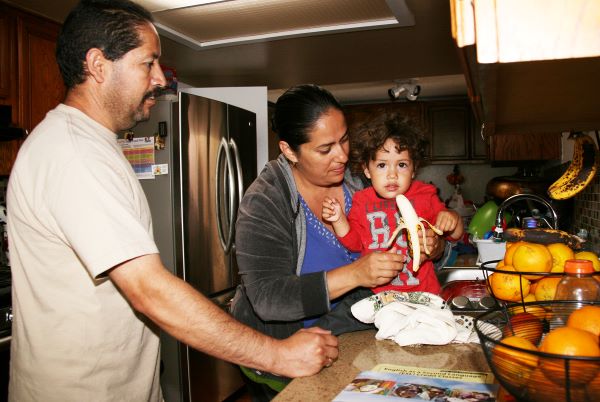 A program must identify each child’s nutritional health needs. To do this, the program’s health and nutrition staff or consultants should consider all the available health information, including the child’s health records, family and staff concerns, special dietary requirements, food allergies, food security, and community nutrition issues that the community assessment or the HSAC has found.
A program must identify each child’s nutritional health needs. To do this, the program’s health and nutrition staff or consultants should consider all the available health information, including the child’s health records, family and staff concerns, special dietary requirements, food allergies, food security, and community nutrition issues that the community assessment or the HSAC has found.
A child’s nutritional assessment includes:
- Medical history
- Nutritional history, including dietary intake and any special requirements
- Food allergies
- Physical examination
- Child’s weight, length, or height (and for infants, head circumference)
Ask families and staff about any special concerns, and check the notes from the child’s most recent physical to see if their health care provider found any issues.
If a child has nutritional needs, the program can develop an individual plan and share it with the family and the right staff. Chapter 10 on services to children with special health care needs has information on individual health care plans.
Staff can measure children with standardized tools or use measurements from the child’s most recent physical exam. They can calculate body mass index (BMI) from the measurements of children 2 and older. The Office of Head Start requires programs to report BMI at enrollment in the Program Information Report (PIR). The Indian Health Service has created a Height and Weight Measurement resource to get accurate heights and weights. The resource includes choosing equipment, measuring infants, measuring toddlers and preschoolers, and best practices for recording the information.
Tips and Strategies for Identifying a Child’s Nutritional Needs
- Make sure forms shared with health care providers include the information you need to make a valid nutritional assessment.
- Train staff in proper techniques for measuring children.
- Ask questions and communicate in a linguistically and culturally appropriate manner.
- Get information from families about eating habits, preferences, cultural practices, and food allergies.
- Use your community assessment and HSAC to learn about community nutritional needs that may affect your families.
Learn More
- 4.2.0.2: Assessment and Planning of Nutrition for Individual Children
- Accommodating Special Diets in Child Care
- What Is It About Autism and Food?
- Meal Pattern Accommodations in CACFP
Read more:
Resource Type: Article
National Centers: Health, Behavioral Health, and Safety
Audience: Directors and Managers
Last Updated: October 31, 2023